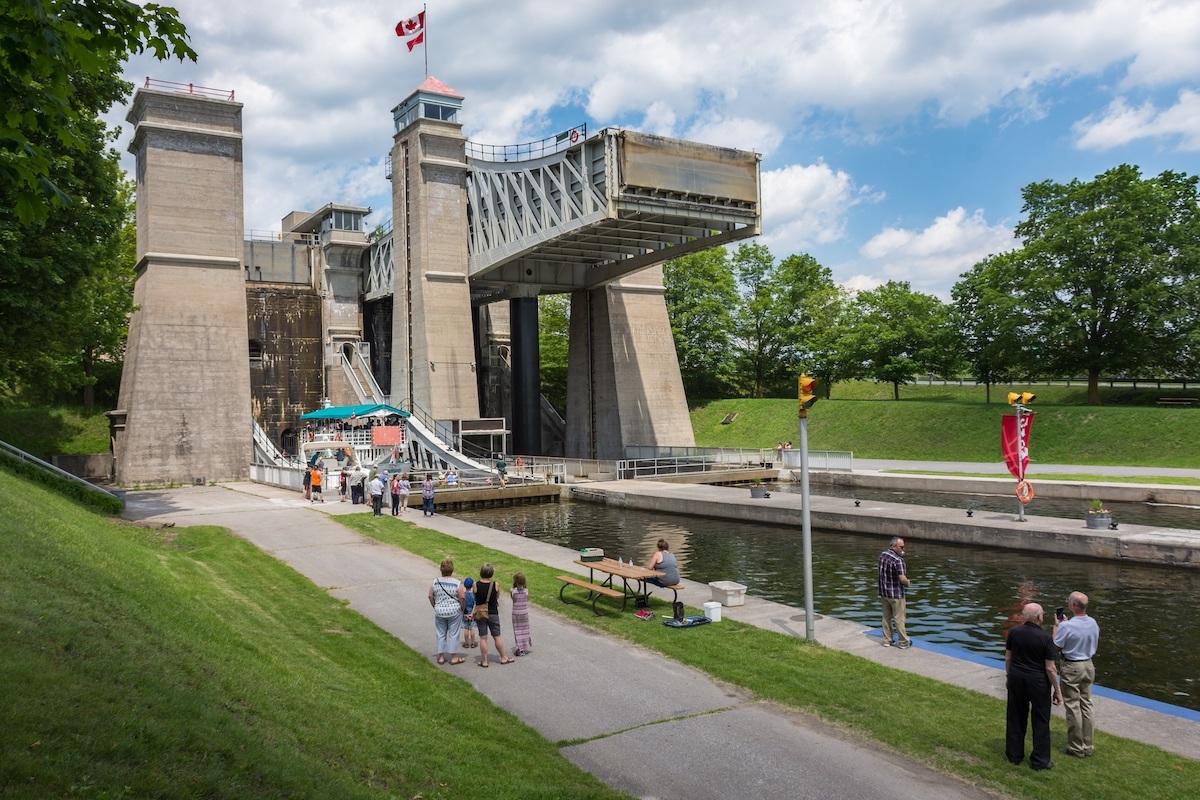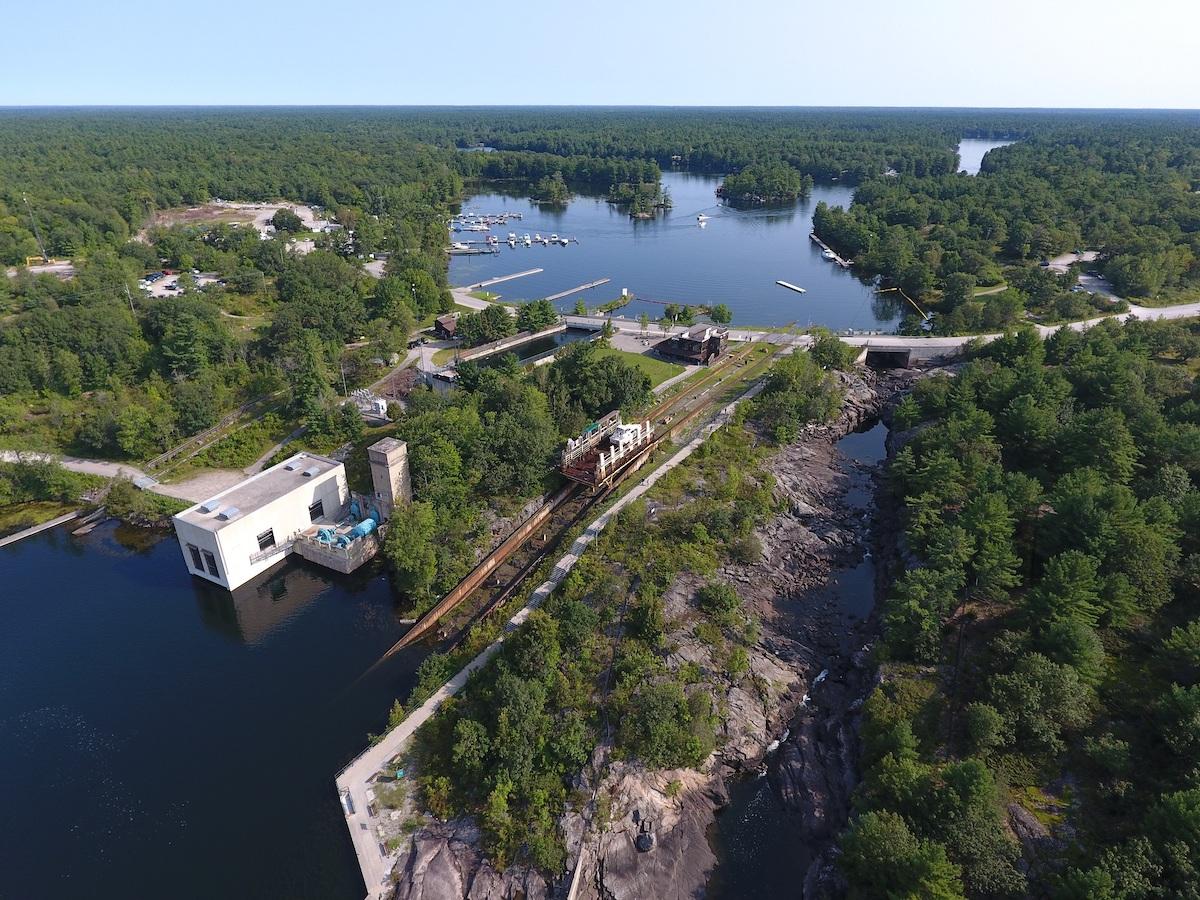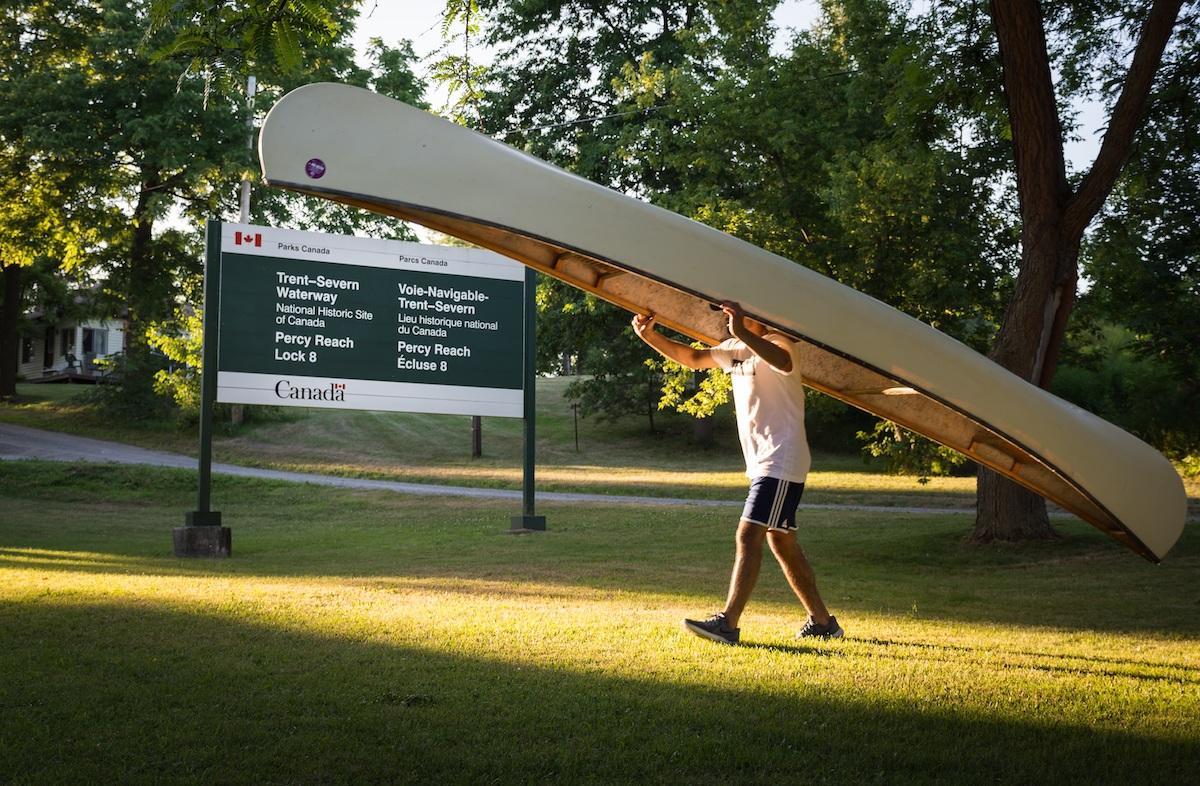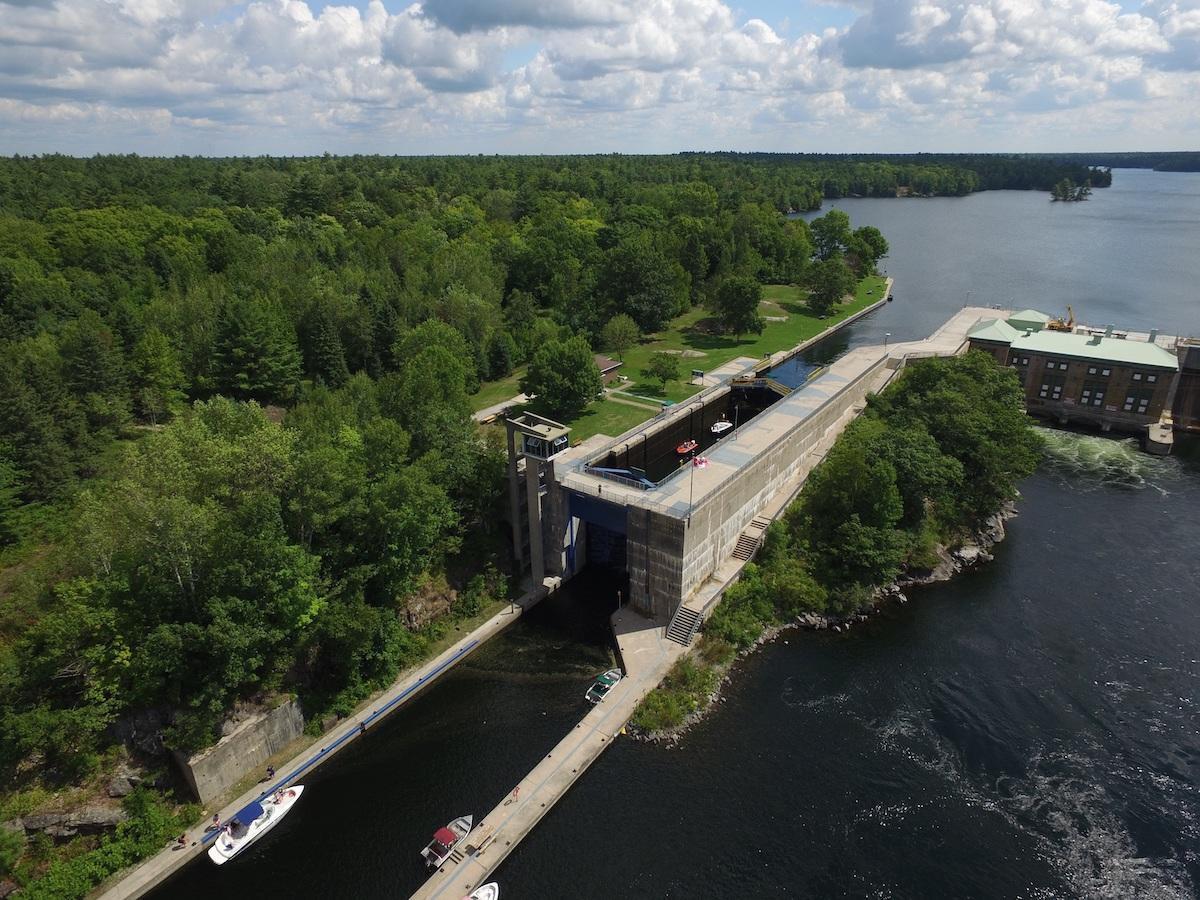
The Peterborough Lift Lock always draws a crowd/Parks Canada
The Trent-Severn Waterway National Historic Site — one of nine heritage canals managed by Parks Canada — is working on its new management plan.
It collected Indigenous and public input from April to June and is now preparing a “What We Heard” report and revising its draft plan. It hopes to table the plan in Parliament in December and publish it in 2023.
Three key strategies are:
• To establish the Ontario waterway as a premiere Canadian recreational destination.
• To conserve, present and interpret the waterway’s rich and evolving history, engineering technology and natural environment.
• To effectively manage an evolved waterway in the 21st century.
Constructed between 1833 and 1930, Canada’s second-largest national historic site features 36 conventional locks, two flight locks, two hydraulic lift locks and a marine railway. Nearly 800 built assets are worth more than $5 billion ($3.84 billion USD).
Two of the world’s few remaining hydraulic lift locks are found here — the Peterborough Lift Lock (the world’s tallest of its type) and the Kirkfield Lift Lock, both of which are more than a century old. More modern examples of similarly impressive technology include North America’s only large marine railway at Big Chute, and the large locks at Swift Rapids and Burleigh Falls.

The Big Chute Marine Railway is the only one of its kind in North America/Parks Canada
“For recreational boaters and land-based visitors alike, these lockstations constitute stunning examples of engineering technological achievement and evolution, and provide visitor experiences unique within Canada’s system of heritage canals,” Parks Canada says in its draft plan.
By showcasing the story of innovative technological achievements in the 19th and early 20th century, the Trent-Severn illustrates how Canadians have been at the forefront of engineering developments in hydrology and civil engineering.
During the 2021 season, 118,772 vessels passed through the waterway’s locks. An estimated 1.3 million land-based visitors enjoyed its trails, parks, green spaces, scenic viewpoints and campsites in 2019, although accurately counting non-boating traffic remains challenging. The Peterborough Lift Lock Visitor Centre welcomed nearly 25,000 visitors in 2019.

Parks Canada hopes to draw more people without motorized boats to the Trent-Severn Waterway/Parks Canada
The Trent-Severn meanders nearly 400 kilometres (240 miles) across Ontario to create a corridor of interconnected lakes and rivers crossing through many communities in a multi-jurisdictional environment.
Parks Canada administers the Trent-Severn, comprising the bed of the waterway up to the upper controlled water elevation limit across much of the system, as well as the land associated with its lockstations and dams, including those in the reservoir lakes. This responsibility includes protecting the commemorative integrity of the site, safe navigation of the waterway, integrated water management, and some aspects of environmental stewardship.
Other municipal, provincial and federal government departments and agencies share responsibilities affecting both lands and waters of the waterway, including land use planning and development, conservation and protection, water quality, transportation, agriculture, resource extraction and tourism activities.
Parks Canada has varying relationships with each of these authorities.
The iconic Peterborough Lift Lock National Historic Site, designated in 1979 for its national architectural significance as the highest hydraulic lift lock in the world. When completed in 1904, it was the highest hydraulic lift lock ever built, with a vertical lift of nearly 20 metres (65 feet) and was reputed to be the largest unreinforced concrete structure in the world.
With 230 wetlands and more than 60 federally listed species at risk, the waterway serves as a regional “ribbon of life” connecting aquatic and terrestrial ecosystems across central Ontario.
“The most fundamental part of the story, however, is not the waterway, but water itself,” says Parks Canada. “Throughout the watersheds that support the waterway, water has influenced communities for millennia. Since time immemorial, Indigenous peoples have held a special relationship with the lands and waters.”

Lock 43 on the Trent-Severn Waterway/Parks Canada
The Mnjikaning Fish Weirs National Historic Site in Orillia reflects the 5,000-year-old history of Indigenous use of these waters for fishing. The weirs have a separate management statement.
The Trent-Severn and its watershed area are located within the traditional territories of the Williams Treaties First Nations. A much smaller area to the extreme south of the waterway falls within the traditional territory of the Mohawks of the Bay of Quinte. There are many species of cultural importance to Indigenous peoples and their traditional rights and harvesting practices. These include the American eel, lake sturgeon, walleye, wild rice (manoomin) and furbearers like muskrats and beavers.
Efforts have been made to expand and promote the Trent-Severn as a destination for a variety of users both with and without boats, and on the water and land. The Canadian Canoe Museum is poised to relocate to an area near the Peterborough Lift Lock.
The last management plan for the Trent-Severn Waterway was released in 2000.



Add comment